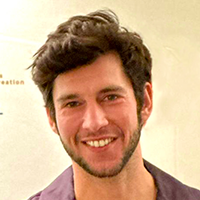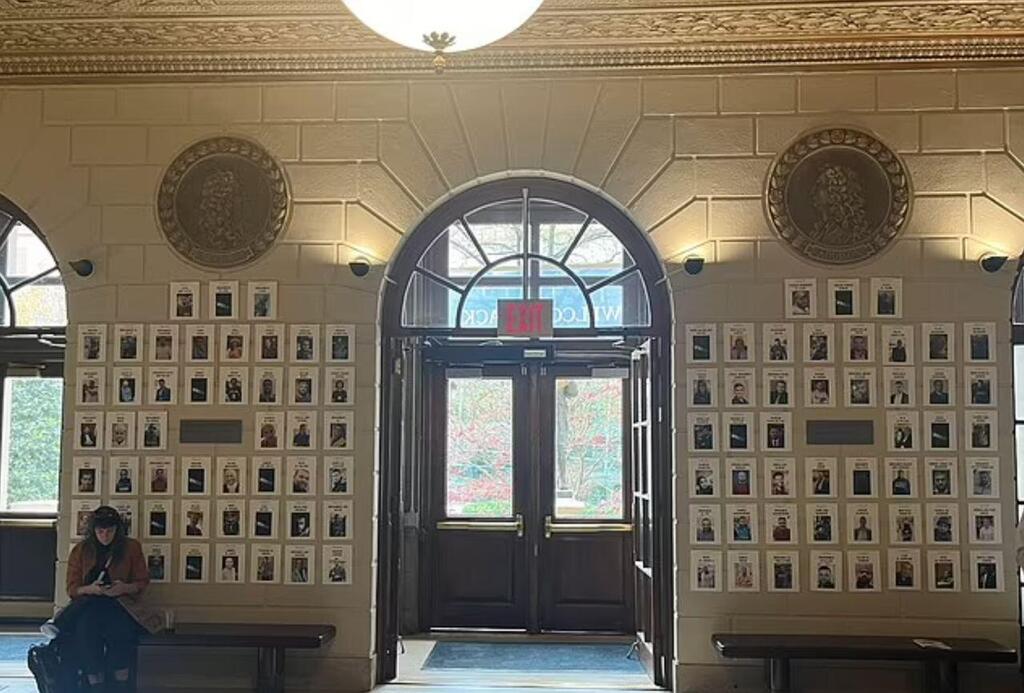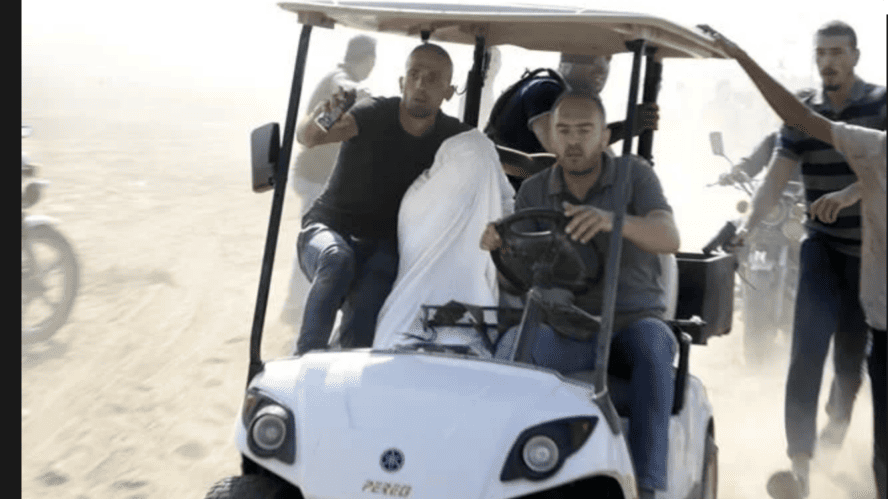Columbia University's School of Journalism considered the best in the world and where Pulitzer Prizes are awarded annually, hanged photos of journalists who worked for Hamas and other terror organizations. Out of 98 names on the wall, 21 worked for Hamas TV and radio stations, 11 worked for media outlets associated with the Islamic Jihad, and at least three were terrorists, according to the IDF.
One of them is Mohamed Halif, a former Al-Aqsa Channel manager, the Hamas TV channel known for the children's program "Pioneers of Tomorrow," featuring a Mickey Mouse-like character named Farfour, teaching children how to use a rifle against Jews. Following criticism of the program, the channel was forced to remove it from the screen, and to explain to the regular child viewers that Farfour was killed by an "Israeli investigator" and became a martyr.
Six other journalists commemorated on the wall worked for Radio Al-Aqsa, also controlled by Hamas, considered a propaganda tool. Additionally, 11 journalists on the list worked for media outlets controlled by the Islamic Jihad. Two more commemorated on the wall are journalists killed in an Air Force bombing in January: Hamza al-Dahdouh, an Al-Jazeera journalist and son of the channel's Gaza bureau chief, and his colleague Mustafa Toria, a freelance video photographer who worked for the French news agency AFP, but also worked for Al-Jazeera.
Initially, it was reported that the two were killed while on assignment as journalists and that they may have been accidentally killed as they used a drone in a combat zone. However, the IDF released a statement proving the two casualties were militants in terrorist organizations in the Gaza Strip who were involved in terror attacks against IDF forces.
Before the attack, they operated drones that threatened IDF soldiers, which prompted the Air Force to attack the terrorists responsible for their operation. A document found by IDF forces in Gaza during the fighting shows the organizational structure of all the operatives in the Al-Quds Brigade, in which Toria's name is mentioned alongside his role in the organization: squad deputy commander."
Hamza al-Dahdouh, allegedly served as an operative in the Palestinian Islamic Jihad terrorist organization, and carried out terrorist operations against the State of Israel. Documents found by IDF forces during the fighting in the Gaza Strip show Dahdouh listed among the operatives in the organization's electronic engineering department. He also appears in documents as having served in the past as a deputy department commander in the terror group's Zeitoun Battalion.
Al Jazeera rejected the allegations and sharply condemned the killing of journalists. According to them, Israel has a history of raising false accusations and fabricating evidence to conceal its heinous crimes.
All the journalists on the memorial wall were chosen by the Committee to Protect Journalists (CPJ), which monitored the number of journalists killed in the war. Two photos of Israeli journalists are also hung on the wall including Yediot Ahronot photographer Roee Edan and Israel Hayom photographer Yaniv Zohar. The committee denies any Palestinian journalist took part in any terrorist activity.
The memorial wall was exposed after one of the school's professors shared a photo of herself on Instagram and wrote that anyone who doubts the legitimacy of these journalists or suggests that they are terrorists - will be blocked immediately. School alumni told Ynet that the memorial is infuriating and that complaints were made in the past, but to no avail. According to them, the CPJ, based in New York, which is openly biased against Israel, has extensive ties to the School of Journalism, and also funded the memorial and its installation.
"Our researchers have independently investigated, verified and double-sourced the circumstances behind each death in line with our rigorous methodology," CPJ said in response to a question from Ynet clarifying that the organization's research and documentation focus on journalists who work for a wide range of news agencies, publicly and privately funded around the world, including freelancers and those presenting opposing viewpoints.
"CPJ does not support journalists engaged in breaking the law. In the cases we have documented, multiple sources have found no evidence to date that these journalists were engaged in militant activity. CPJ’s ongoing list of casualties in the Israel-Gaza war is a preliminary list that includes all killed journalists. We continue to investigate the circumstances of each case."




